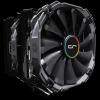Learning about NAS
-
Featured Topics
-
Topics
-
GreenLeaf ·
Posted in General Discussion0 -
Pirateben ·
Posted in New Builds and Planning1 -
1
-
DietzDiet ·
Posted in Storage Devices3 -
LinuxPiThor ·
Posted in Linux, macOS and Everything Not-Windows1 -
frozensun ·
Posted in Laptops and Pre-Built Systems10 -
9
-
20
-
Vectraat ·
Posted in Phones and Tablets1 -
3
-

















Create an account or sign in to comment
You need to be a member in order to leave a comment
Create an account
Sign up for a new account in our community. It's easy!
Register a new accountSign in
Already have an account? Sign in here.
Sign In Now